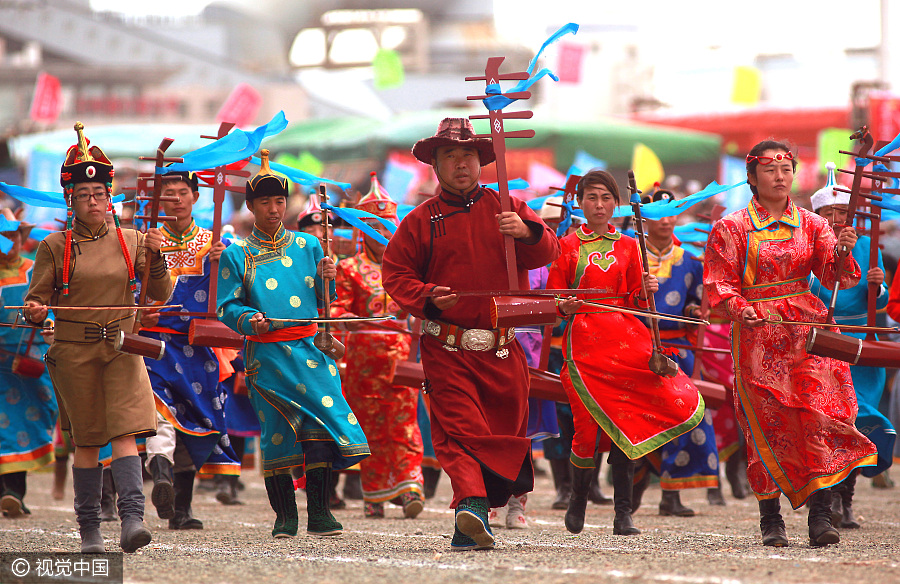Cultural Landmarks In Hohhot, Inner Mongolia
Share
Hohhot, the capital of Inner Mongolia, is a city rich in history and culture. It serves as a vibrant hub where traditional Mongolian heritage meets modern urban life. This article will guide you through some of the most significant cultural landmarks in Hohhot, providing insights into their historical significance and the experiences they offer to visitors.

1. The Inner Mongolia Museum
The Inner Mongolia Museum is a must-visit for anyone interested in the region's history and culture. Established in 1957, this museum showcases a vast collection of artifacts that reflect the rich heritage of the Mongolian people. From ancient relics to contemporary art, the museum offers a comprehensive overview of Inner Mongolia's past.
Key Highlights:
- Exhibits: The museum features various exhibits, including dinosaur fossils, ancient coins, and traditional Mongolian clothing.
- Architecture: The building itself is an architectural marvel, blending traditional Mongolian design with modern aesthetics.

Visiting Information:
- Location: 27 Xinhua Street, Hohhot
- Best Time to Visit: Spring (April to June) and Autumn (September to November) when the weather is mild and pleasant.
2. Dazhao Temple
Dazhao Temple, also known as the Great Zhao Temple, is the oldest and largest Tibetan Buddhist temple in Hohhot. Built in the 16th century, it is an important religious site for both locals and visitors.
Key Highlights:
- Architecture: The temple features exquisite carvings and a stunning statue of Sakyamuni, the founder of Buddhism.
- Cultural Significance: Dazhao Temple is not just a place of worship; it also hosts various cultural events and festivals throughout the year.
:quality(90)/f/86150/1920x1282/be2349ba39/hohhot-4.jpg)
Visiting Information:
- Location: Dazhao Street, Hohhot
- Best Time to Visit: Visit during the Tibetan New Year for a unique cultural experience.
3. Zhaojun Tomb
Zhaojun Tomb is a historical site dedicated to Wang Zhaojun, one of the Four Beauties of ancient China. Legend has it that she sacrificed her life in the Han Dynasty to marry a Xiongnu chieftain, promoting peace between the two cultures.
Key Highlights:
- Scenic Beauty: The tomb is set in a picturesque area surrounded by lush greenery and offers a serene atmosphere for reflection.
- Cultural Events: The site hosts various cultural activities, including traditional music and dance performances.
Visiting Information:
- Location: 20 km from Hohhot city center
- Best Time to Visit: Spring and Autumn for the best weather and beautiful scenery.
4. The Five Pagoda Temple
The Five Pagoda Temple, also known as Wuta Si, is a stunning example of Tibetan Buddhist architecture. Built in the 18th century, this temple is famous for its five pagodas, which are adorned with intricate carvings and sculptures.
Key Highlights:
- Unique Design: The temple's design is unique, with each pagoda representing different aspects of Buddhist teachings.
- Cultural Significance: It serves as an important center for Buddhist learning and practice.
Visiting Information:
- Location: Wuta Temple Road, Hohhot
- Best Time to Visit: Year-round, but particularly vibrant during Buddhist festivals.
5. Hohhot's Ethnic Culture Park
This park is a celebration of the diverse ethnic cultures that make up Inner Mongolia. It features traditional Mongolian yurts, cultural performances, and exhibitions that showcase the region's rich heritage.
Key Highlights:
- Cultural Performances: Visitors can enjoy traditional Mongolian music and dance performances, providing a glimpse into the local culture.
- Interactive Experiences: Participate in traditional activities such as archery and horse riding.
Visiting Information:
- Location: Near the city center of Hohhot
- Best Time to Visit: Summer months when outdoor activities are in full swing.
Weather in Hohhot
Hohhot experiences a continental climate, characterized by hot summers and cold winters. The best times to visit are during the spring and autumn months when temperatures are mild, making it comfortable for sightseeing.
Seasonal Overview:
- Spring (April to June): Average temperatures range from 10°C to 25°C (50°F to 77°F).
- Summer (July to August): Warm with temperatures reaching up to 30°C (86°F).
- Autumn (September to November): Cool and pleasant, with temperatures dropping to around 10°C (50°F).
- Winter (December to March): Cold, with temperatures often falling below -10°C (14°F).
Conclusion
Hohhot is a city that beautifully encapsulates the essence of Mongolian culture and history. From ancient temples to modern museums, each landmark tells a story that contributes to the rich tapestry of this vibrant region. Whether you're a history buff, a culture enthusiast, or simply looking for a unique travel experience, Hohhot's cultural landmarks will leave a lasting impression.
Don't miss the opportunity to immerse yourself in the local culture. Book your flights and accommodations now to experience the wonders of Hohhot firsthand!
:quality(90)/f/86150/1920x1282/be2349ba39/hohhot-4.jpg)



